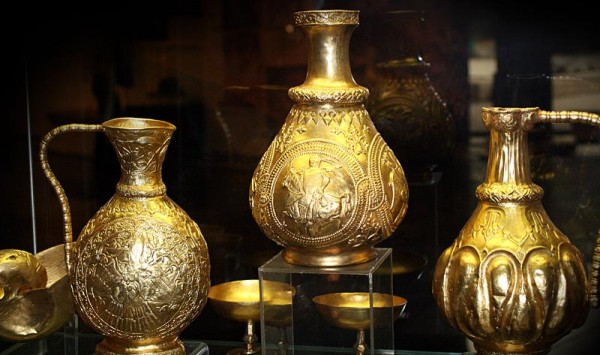The treasure was discovered in 1799 in Transylvania, a region in Hungary. It consists of 23 gold vessels which weighed almost 10 kg. Most of the vessels were richly decorated with geometrical and plant ornaments, animal images and anthropoid figures. Some of the figures and decorations are a mixture of Byzantine, Persian and Turkic tradition. There are two reasons for identifying the treasure as proto-Bulgarian: - The similarity between the horsemen from the treasure and the famous stone relief from Madara; - Inscriptions in Old Bulgarian. It is well known that in the first half of the 9th c. the territories along the middle reaches of the Danube were part of Bulgaria. There is almost no doubt that the rich set from Nagy Saint Miklosh belonged to one of the Bulgarian military commanders sent as governors of Transylvania. The treasure was probably buried in the ground at the time of some of the attacks of the Magyars in the end of 9th c. Today, the original treasure is kept in Vienna Museum of History and Art. A copy of the treasure is kept in the National History Museum in Sofia.
|


